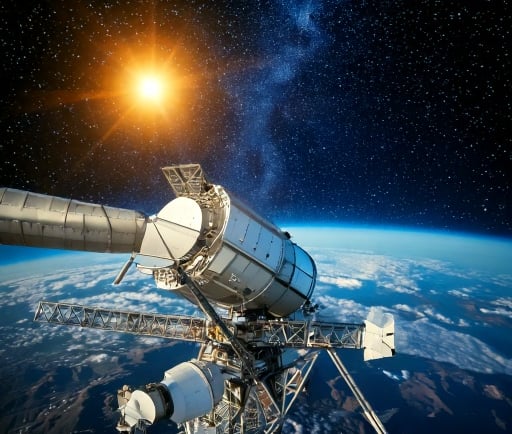How Telescopes Utilize IFU Spectrum Colors


Introduction to Space Telescopes
Space telescopes have become a fundamental tool for astronomers as they venture to unravel the mysteries of our universe. By operating outside the distorting effects of Earth’s atmosphere, these telescopes provide clearer and more detailed observations of celestial objects. Utilizing advanced technologies, they can identify elements and molecules, contributing significantly to our understanding of the cosmos.
The Role of IFU Spectroscopy in Astronomy
Integral Field Unit (IFU) spectroscopy is a revolutionary technique employed by space telescopes to gather data on light emitted or absorbed by celestial bodies. The IFU captures spectral information across a range of wavelengths, represented by distinct colors—including red, blue, green, and yellow. This integration of spatial and spectral data enables scientists to dissect the compositions of stars and galaxies in unprecedented ways.
Using IFU spectroscopic data, researchers can reveal the chemical content of distant galaxies, star formation processes, and even the presence of exoplanets. This method stands out due to its ability to map out vast areas of the sky and compile a detailed spectrum for each region. This comprehensive approach is particularly effective in areas with active star formation, where various elements intermingle.
Elements and Molecules Identified by Space Telescopes
The information obtained from space telescopes, especially through IFU spectroscopy, allows astronomers to identify a plethora of elements and molecules present in the universe. Commonly detected elements include hydrogen, helium, carbon, and oxygen, each playing a critical role in cosmic evolution. The ability to pinpoint these elemental signatures is essential, as it informs researchers about the lifecycle of stars, the genesis of galaxies, and the conditions conducive to life.
For instance, the examination of emission lines in the spectrum can indicate the presence of ionized hydrogen or other important elements. Furthermore, molecules such as water vapor and carbon dioxide have been detected in the atmospheres of exoplanets, providing significant insights into their potentially habitable conditions.
The application of IFU spectroscopy not only enhances our understanding of the chemical makeup of celestial phenomena but also broadens our perspective on the universe's history. Each unique spectrum captured by space telescopes intertwines the narrative of cosmic evolution, connecting the past to our current understanding of what lies beyond.
Conclusion
In summary, space telescopes equipped with IFU spectroscopy are handily at the forefront of astronomical study. By utilizing spectral colors such as red, blue, green, and yellow, these instruments gather essential data that unlocks the secrets of the universe. The identification of various elements and molecules not only enriches our knowledge but also fuels the quest for discovering new worlds and understanding cosmic architectures. The information gained from these observations holds the promise of revealing answers to some of the world's oldest questions about existence and our place within the cosmos.
